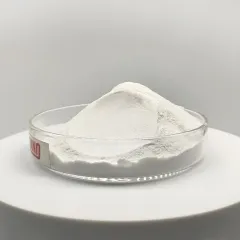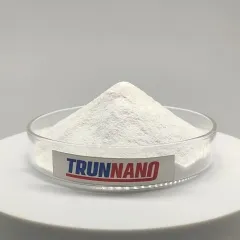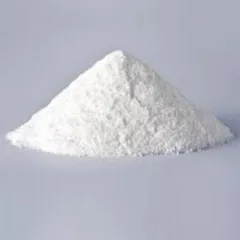Sodium Silicate: the Wide Use and Relevance of a Versatile Chemical Substance
Sodium silicate, also called water glass or bubbly soda ash, is an inorganic compound with the chemical formula Na ₂ SiO ₃. It is a water-soluble salt composed of silica (SiO ₂) and sodium oxide (Na ₂ O) and plays a crucial function in several areas such as sector, building and construction, chemical market, and paper-making as a result of its unique chemical residential or commercial properties and large range of uses. Sodium silicate is a white or somewhat yellow solid, generally in the type of powder or service. It has a density of regarding 2.40 g/cm ³ and a melting point of about 1088 ° C. Salt silicate is highly alkaline, with a pH worth typically between 11.5 and 12.5. It is extremely soluble in water and is capable of forming viscous solutions which have good gelling and glue buildings. The main chemical properties include: alkaline – sodium silicate remedy is highly alkaline, can neutralize acidic materials, and is extensively utilized in acid-base neutralization responses; gelling – sodium silicate solution can develop gel-like materials under certain conditions, with excellent bond and film-forming buildings; Warm resistance – sodium silicate has high heat resistance, also at high temperatures will certainly not break down, suitable for applications in high-temperature atmospheres; Stability – at room temperature level, salt silicate service is a lot more stable, but at heats or acidic environments will progressively decay. Sodium silicate can be prepared by a variety of methods, of which the most usual technique is with the response of silica and salt hydroxide. The certain actions are as follows: first, prepare silicon dioxide (SiO ₂) and salt hydroxide (NaOH), then mix both in a specific proportion, and accomplish the response at a heat; after the reaction is finished, remove the pollutants by filtering, and concentrate the filtrate to the required concentration, and finally cool down the focused option to form strong sodium silicate. An additional typical prep work technique is to extract sodium silicate from a mixture of quartz sand and soda ash (sodium carbonate). The details steps are as follows:
(Sodium Silicate Powder)
1. Prepare quartz sand (SiO ₂) and soft drink ash (Na ₂ CO ₃).
2. Mix both according to a specific proportion, thaw them at a high temperature, liquify the molten item in water, filter to eliminate insoluble issue, and concentrate the filtrate.
3. Type strong sodium silicate after cooling.
(Sodium Silicate Powder)
Sodium silicate has a variety of applications in several fields because of its distinct chemical and physical homes. In building materials, sodium silicate is utilized as an additive for concrete to enhance its stamina, resilience and impermeability. Sodium silicate remedy can be covered externally of timber and other combustible materials to form a fire-resistant movie and enhance the fire resistance of the products. Sodium silicate option can additionally penetrate the interior of building products to create a nonporous film that serves as a waterproofing agent. In industrial cleansing, salt silicate solution can be used to clean up range and corrosion from the inside of central heating boilers, enhancing their effectiveness and life. Sodium silicate remedy can also get rid of grease and dirt from metal surfaces, enhancing the sanitation of steel surfaces. In the paper market, sodium silicate can be used as a pulp lightening agent to boost the brightness and quality of paper, along with to enhance the stamina and tear resistance of paper, boosting the life of paper. In textile market, salt silicate can be used as a complementary agent for dyes to improve the attachment and color illumination of dyes, and it can also be utilized in the completing of textiles to boost the feel and look of textiles. In chemical production, sodium silicate can be made use of as a stimulant for certain chemical reactions to improve the reaction rate and return and is likewise among the crucial raw materials for the manufacturing of silica gel, which is extensively utilized in the fields of adsorbents, catalyst service providers and so on. In the field of farming, sodium silicate can be made use of as a soil conditioner to promote the fertility and water retention of the soil, and it can additionally advertise the development of the plant origin system and boost the return and quality of plants.
Although salt silicate has a wide variety of applications in many areas, it is still essential to concern its security and environmental protection issues in the process of use. In terms of safety and security, salt silicate service is strongly alkaline, and contact with skin and eyes might trigger irritability or burns; protective handwear covers and glasses should be used when using. Breathing of sodium silicate dust or vapor may cause respiratory pain; excellent air flow should be maintained during procedure. Unintentional intake of sodium silicate may trigger gastrointestinal irritability or poisoning; if inadvertently swallowed, instant clinical interest ought to be sought. In order to environmental kindness, the discharge of sodium silicate option into the setting may affect the marine ecosystem. For that reason, the wastewater after use ought to be effectively treated to ensure conformity with environmental requirements before discharge. Waste salt silicate solids or options should be taken care of in accordance with contaminated materials therapy guidelines to avoid pollution of the environment. Additionally, salt silicate should also pay attention to conserving power and exhaust reduction in the procedure of manufacturing and utilize to reduce the waste of sources and environmental contamination and achieve lasting advancement.
(Sodium Silicate Powder)
In summary, as a multifunctional chemical material, salt silicate plays an irreplaceable duty in numerous areas through its exceptional chemical homes and wide variety of usages. From structure products to commercial cleaning, from the paper market to the fabric sector, and from chemical manufacturing to farming, salt silicate has actually shown outstanding efficiency. Nonetheless, in the procedure of usage, we need to likewise take note of its security and environmental protection to ensure that it brings comfort without adversely impacting human health and wellness and the setting. With the growth of science and modern technology, it is believed that sodium silicate will certainly show brand-new application leads in even more fields. Salt silicate will not just continue to strengthen its application in existing areas yet additionally might locate new application situations in new products, new energy and various other emerging fields, bringing more opportunities for the advancement of human culture.
TRUNNANO is a supplier of Zirconium Diboride with over 12 years of experience in nano-building energy conservation and nanotechnology development. It accepts payment via Credit Card, T/T, West Union and Paypal. Trunnano will ship the goods to customers overseas through FedEx, DHL, by air, or by sea. If you want to know more about sodium silicate for soap making, please feel free to contact us and send an inquiry(sales8@nanotrun.com).
All articles and pictures are from the Internet. If there are any copyright issues, please contact us in time to delete.
Inquiry us


